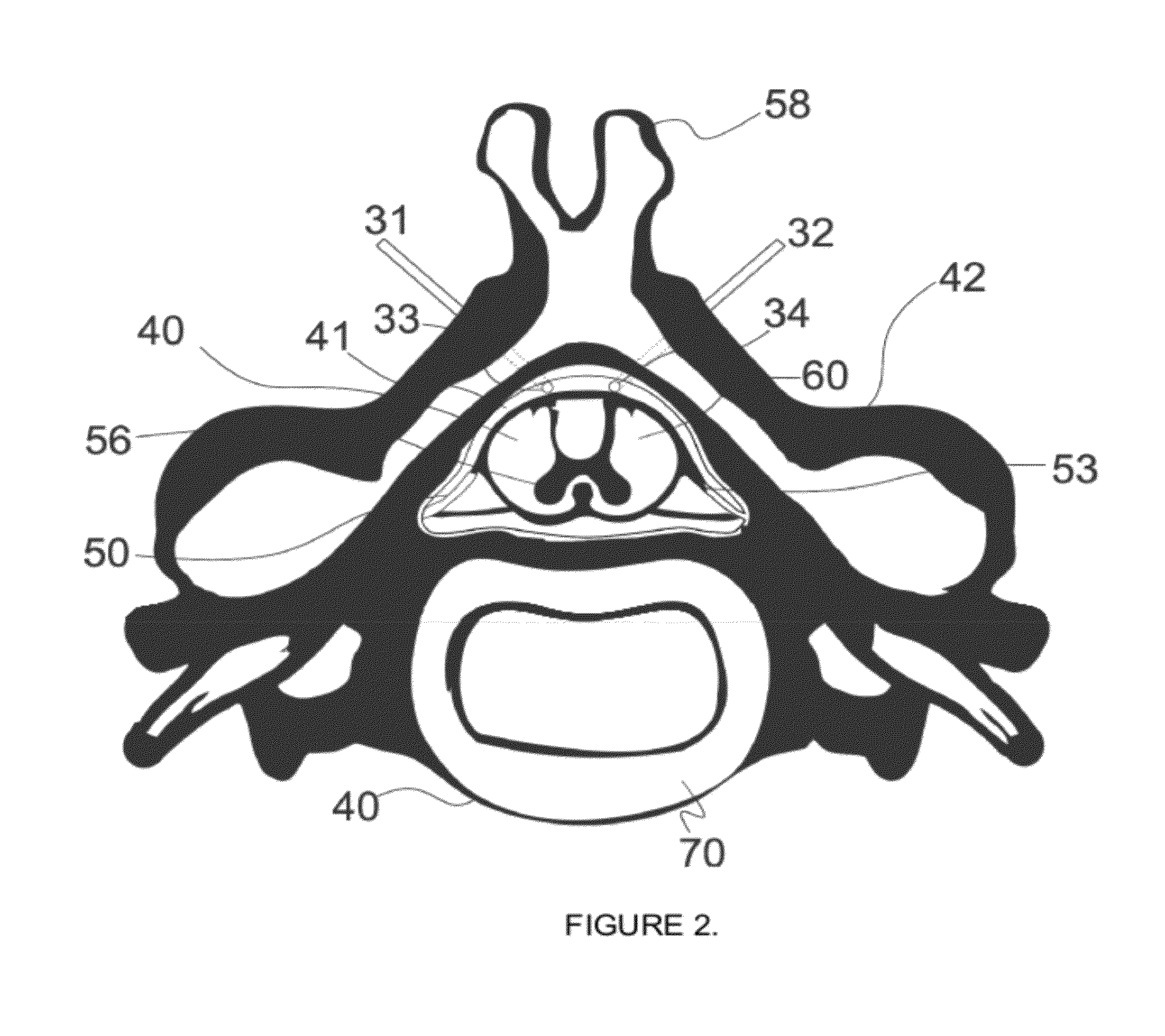Method, system and apparatus for control of pancreatic beta cell function to improve glucose homeostasis and insulin production
a pancreatic beta cell and insulin production technology, applied in the field of pancreatic beta cell function control, can solve the problems of affecting the quality of life and life span, the burden of diabetes chronic disease is heavy and growing, and the cost of diabetes-related care is estimated at $3.4 trillion over the next decad
- Summary
- Abstract
- Description
- Claims
- Application Information
AI Technical Summary
Benefits of technology
Problems solved by technology
Method used
Image
Examples
example 1
The Biological Feedback Loop Between SSNF and Beta Cells
[0076]The biological feedback loop between a small sensory nerve fiber (SSNF) ending containing TRPV1 sensory neurons (e.g. C-fibers) secreting neuropeptides and beta cells stimulating insulin action can be controlled by electrical stimulation. FIG. 10 shows a feedback diagram of a SSNF ending containing TRPV1 sensory neurons (e.g., C-fibers) when modulated by electrical neural stimulation techniques by methods described in this invention act on the nerve bundles dorsal root ganglia through volume conduction from a dorsal column placement of an electrode lead, or other methods of sensory nerve stimulation described herein. The neuropeptide CGRP, among others, are released from the activated TRPV1 sensory neuron terminal. The released neuropeptides act on the beta cell stimulating insulin action through an inflammatory response action.
[0077]Subjects treated with spinal cord stimulation using excitatory protocols described herein...
example 2
Placement of Epidural Neural Stimulator
[0078]A spinal cord stimulator (SCS) is a medical device typically used for the treatment of chronic pain, which usually includes an implantable lead, a pulse generator (implanted or external) and a power source as shown in FIG. 1. Wired SCS devices introduce an implantable lead containing a number of electrodes into the epidural space, as well as an extension cord to an implantable pulse generator (IPG). These IPGs can either contain a battery pack or a radio frequency (RF) receiver and are typically placed under the skin around the buttocks or hip area. The diabetic subject would have SCS leads placed at a medical facility bilaterally. The subject lays down on a flat surface with their back facing upwards. Typically, a 14-gauge Tuohy needle (2.1 mm diameter or less) is inserted into the back and is carefully navigated upwards into the epidural space of the spinal cord with the aid of a fluoroscope or other imaging device. Once the Tuohy needl...
example 3
Electrical Stimulation Regulates Insulin Activity in Diabetics
[0081]SCS-induced modulation of SSNFs leads to enhanced insulin action and release. This can occur as a result of improved SSNF function and restoration of insulin receptor regulation. Outcome measures include the Oral Glucose Tolerance Test (OGTT) and a Homeostasis Model Assessment of Insulin Sensitivity (HOMA) analysis. Oral Glucose Tolerance Test (OGTT) is a widely used procedure that was originally developed to classify carbohydrate tolerance. The OGTT requires the subject to be fasting overnight. A plasma sample is then drawn to determine baseline values for glucose and insulin. Following an oral glucose load (usually by swallowing 75 grams of dextrose), the glucose and insulin in blood plasma samples are measured at specific times, such as 30 minutes and 120 minutes (Weyer 1999). The test indicates the ability (also called tolerance) of pancreatic β-cells to respond to glucose stimulation by secreting sufficient amo...
PUM
 Login to View More
Login to View More Abstract
Description
Claims
Application Information
 Login to View More
Login to View More - R&D
- Intellectual Property
- Life Sciences
- Materials
- Tech Scout
- Unparalleled Data Quality
- Higher Quality Content
- 60% Fewer Hallucinations
Browse by: Latest US Patents, China's latest patents, Technical Efficacy Thesaurus, Application Domain, Technology Topic, Popular Technical Reports.
© 2025 PatSnap. All rights reserved.Legal|Privacy policy|Modern Slavery Act Transparency Statement|Sitemap|About US| Contact US: help@patsnap.com



